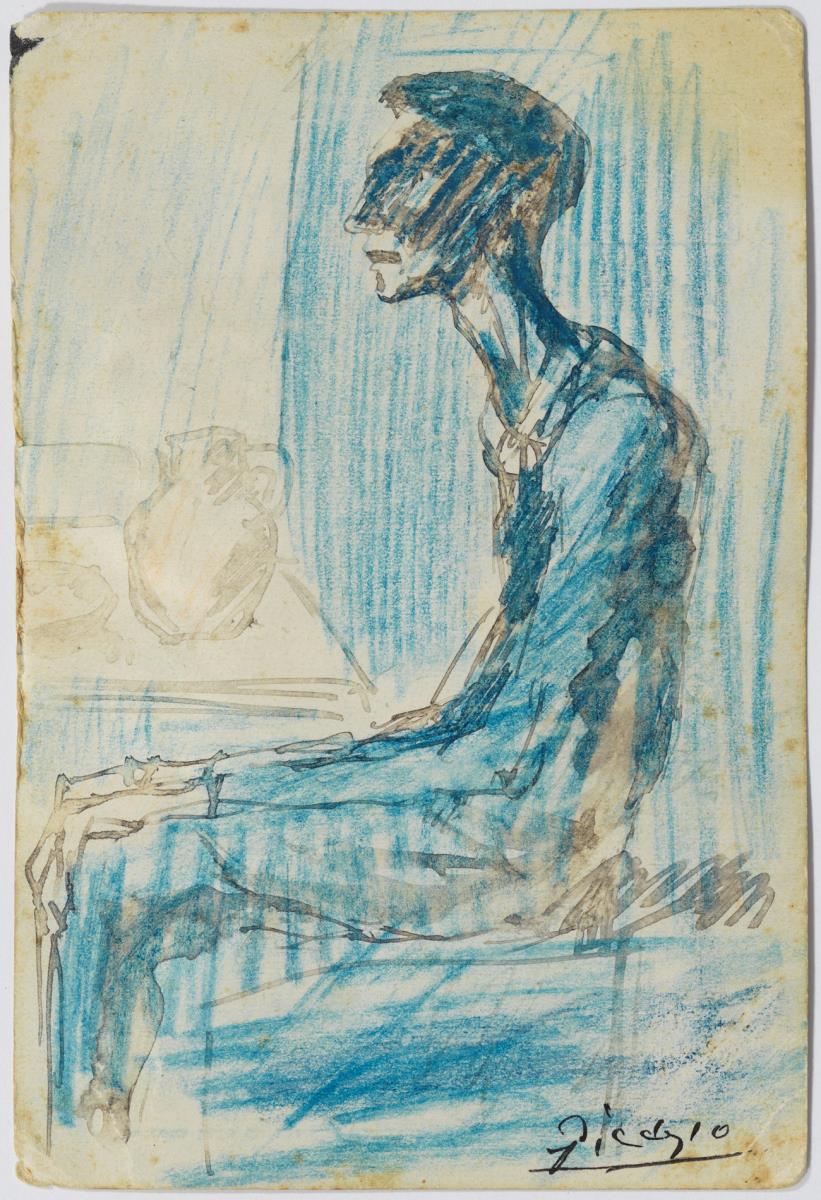The Blind Man

The Blind Man
1903
The Blind Man
Picasso concluded his third stay in Paris and returned to Barcelona in January 1903, remaining there for fourteen months. The artist painted some emblematic canvases of his Blue Period during this period of intense production, such as La Vie, as he continued to further explore the depiction of the misery and suffering of individuals living on the margins of society. In this drawing, executed on the front of a postcard, Picasso confronts us with this reality by depicting an emaciated blind man in a hieratic seated position enclosed within four walls and staring into space. The elongated trunk of the blind man’s body, so characteristic of the figures of this period, in addition to his exaggeratedly disproportionate hands convey the pathos of the composition, and Picasso emphasises this through strong backlighting that blinds the subject’s face. There is a sensible balance in the drawing between the inexpression of someone who sees nothing and the expression of someone who wants to make a statement against poverty by employing vigorous, essential strokes.
The drawing, which Barcelona City Council acquired for the museum at public auction in October 2021, should be linked to the series of works featuring the figure of a blind man that Picasso produced in the latter half of 1903, including his extraordinary The Blind Man’s Meal at New York’s Metropolitan Museum of Art and The Blind Man at Harvard University’s Fogg Art Museum.
1903
14.6 cm x 9.9 cm
Purchase, 2021
MPB 115.007





